The Front Page. - Copy 111 ( Lord Boyce and Coastal Forces, The Pothole Problem.)
8 July 2010
Admiral Lord Boyce unveils a Plaque on Dover Seafront to commemorate Dover's Coastal Forces in WWII.
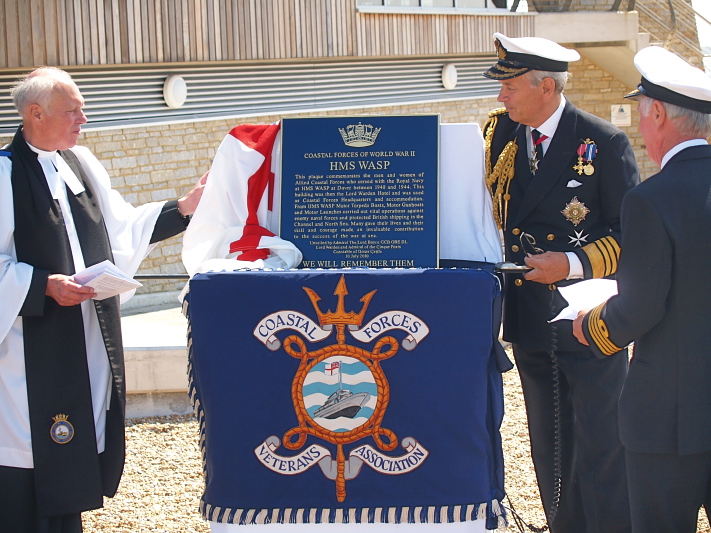
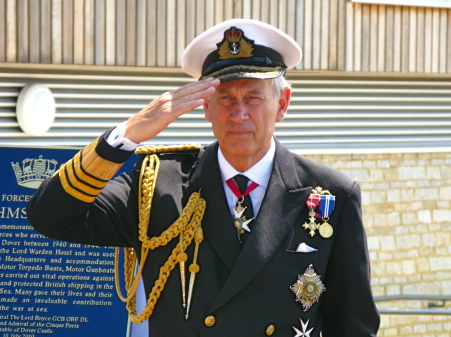 A very moving ceremony was held in hot sunshine on saturday July 10 on the promenade outside the Dover Seasports Centre. I have had the following official information through so I will let that explain in satisfying detail what this event was all about....
A very moving ceremony was held in hot sunshine on saturday July 10 on the promenade outside the Dover Seasports Centre. I have had the following official information through so I will let that explain in satisfying detail what this event was all about....
An event was held at 1100 Saturday 10 July for the unveiling and blessing of a plaque commemorating the presence of the Royal Navy’s Coastal Forces at Dover during World War II. The unveiling was undertaken by Admiral Lord Boyce, Lord Warden of the Cinque Ports and Constable of Dover Castle, in the presence of the Worshipful Town Mayor of Dover and representatives of naval veteran groups. The event took place on Dover Marine Parade adjacent to the Sea Sports Centre and close to Harbour House. The plaque will subsequently be placed on the Lord Warden House, formally the Lord Warden Hotel, which was the headquarters and operations centre for Coastal Forces during World War II. Planning Approval and Listed Building Consent have been obtained for the placing of the plaque.
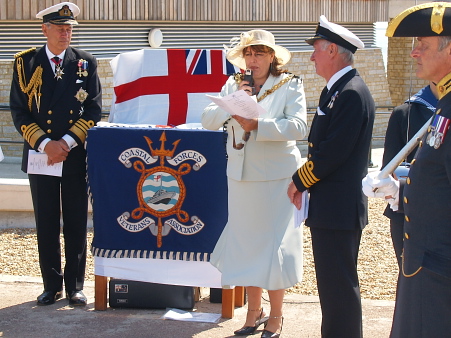 The event was organised by the Coastal Forces Heritage Trust, based at the Royal Naval Museum, HM Naval Base, Portsmouth, led by the Director of the Trust, Captain Trevor Robotham Royal Navy. The Trust is being assisted and has the full support of the Dover Harbour Board, the owners of the Lord Warden House.
The event was organised by the Coastal Forces Heritage Trust, based at the Royal Naval Museum, HM Naval Base, Portsmouth, led by the Director of the Trust, Captain Trevor Robotham Royal Navy. The Trust is being assisted and has the full support of the Dover Harbour Board, the owners of the Lord Warden House.
Coastal Forces were the Motor Torpedo Boats, Motor Gunboats and Motor Launches which operated from bases around the coast of Britain during the war. These heavily armed, wooden constructed craft protected allied shipping around our coasts and sought-out and attacked the enemy forces, particularly E-Boats, which were such a threat to our naval activity. The men manning these Coastal Forces craft were extremely young, barely in their twenties and the number of casualties was extremely high as were the distinguished service awards for Coastal Forces. Coastal Forces operated mainly in the dark of night, without the aid of radar in the early years of the war.
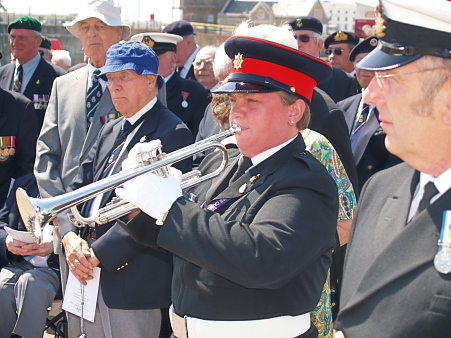 These young men went to sea in these small fast attack craft, heavily laden with high octane fuel and ammunition and faced immense danger. The Coastal Forces from HMS Wasp at Dover contributed to all naval activity in the Channel, including the “channel dash” in early 1942 when the German ships the Scharnhorst, the Gneisenau and the Prinz Eugen made their successful escape from Brest through thr Channel to safe German waters. Coastal Forces from Dover also played an invaluable role in protecting the naval forces at the Normandy landings. HMS Wasp was commissioned on 2 September 1940 and de-commissioned on 14 November 1944. HMS Wasp was one of the Royal Navy’s principle Coastal Forces bases and forces from there played a significant part in the success of the naval war in the Channel.
These young men went to sea in these small fast attack craft, heavily laden with high octane fuel and ammunition and faced immense danger. The Coastal Forces from HMS Wasp at Dover contributed to all naval activity in the Channel, including the “channel dash” in early 1942 when the German ships the Scharnhorst, the Gneisenau and the Prinz Eugen made their successful escape from Brest through thr Channel to safe German waters. Coastal Forces from Dover also played an invaluable role in protecting the naval forces at the Normandy landings. HMS Wasp was commissioned on 2 September 1940 and de-commissioned on 14 November 1944. HMS Wasp was one of the Royal Navy’s principle Coastal Forces bases and forces from there played a significant part in the success of the naval war in the Channel.
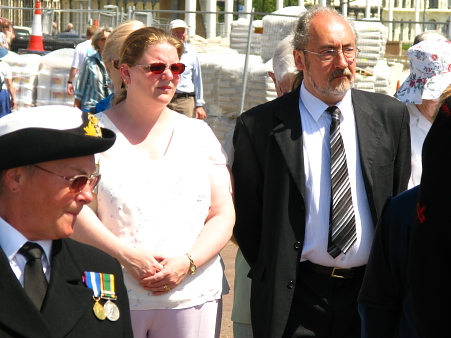 The Lord Warden House has been a majestic and dominant feature on the landscape of Dover. It was opened as a hotel in September 1853 by the South Eastern Railway and quickly became a popular place of accommodation for wealth passengers waiting to catch packet boat sailing to France. Charles Dickens was a frequent user of the hotel as was William Makepeace Thackeray. Napolean III, the Emperor of France, was a guest at the hotel on several occasions which had many other notable guests. Although the hotel continued to be a centre of social activity between the First and Second World Wars its high days were over as air travel became the popular means of crossing the Channel.
The Lord Warden House has been a majestic and dominant feature on the landscape of Dover. It was opened as a hotel in September 1853 by the South Eastern Railway and quickly became a popular place of accommodation for wealth passengers waiting to catch packet boat sailing to France. Charles Dickens was a frequent user of the hotel as was William Makepeace Thackeray. Napolean III, the Emperor of France, was a guest at the hotel on several occasions which had many other notable guests. Although the hotel continued to be a centre of social activity between the First and Second World Wars its high days were over as air travel became the popular means of crossing the Channel.
It was then, in the second World War, that the Royal Navy established the hotel as the headquarters of HMS Wasp and an important part of its history was established. After the war the building was in poor shape and was used by a successive number of port organisations. Dover Harbour Board acquired the building after the war and spent almost £1 Million restoring the property, which remains a very visible and impressive landmark for visitors to Dover. Its current use is as a cruise terminal centre and organisational control for port commercial transport.
It is entirely appropriate that the wartime history of this very fine building should be identified for the benefit of the public. It is difficult to believe that the building will not be reverted to a more appropriate and impressive use one day. End.
Just briefly about the pictures: Top shot shows the Reverend David Berridge who carried out the service and blessing, also in the shot on the right hand side is the Admiral Lord Boyce, the Lord Warden of the Cinque Ports and Constable of Dover Castle, who performed the unveiling in fine style. Then Lord Boyce again. Next picture down is of the Mayor of Dover making her speech. Then young trumpeter Heidi Watkins who performed magnificently, then Cllr and Forumite Chris Precious with wife Stephanie Precious. Then last but not least, most certainly not least, a gathering of veterans standing firm in the blazing heat.
Pictures Colette Boland, Paul Boland.

* * *
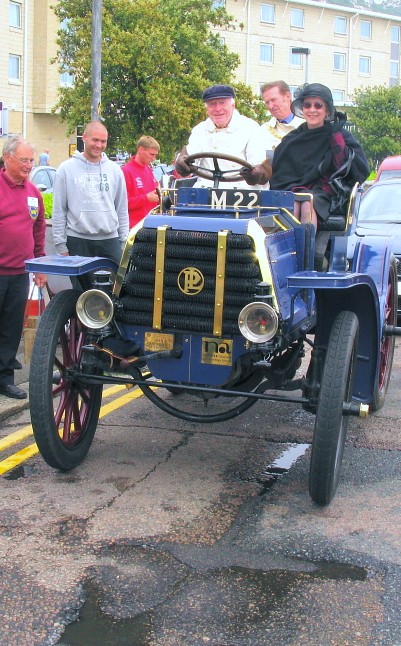



With regard to the pictures above. Picturing potholes is not the most thrilling of splendiferous moments, in photographic terms. Lets face it potholes are dull! Dull to photograph, dull to look at! Coupled with that you have the added prospect of seriously being run over while picturing the damn things....as while doing so it becomes necessary, as you can understand, to stand in the middle of the highway, in the middle of the fast flow of traffic, in order to get the pictures. Or to put it more correctly, you wait til the fast flow of traffic abates and then play chicken before the next lot thunder along. Even then what have you got, nothing but dull pictures.
So, the picture of the Panhard et Levassor (got the name right now, thanks to Ken Baker) is there above to brighten up the otherwise dull page...but whats this!!? just ahead of it on the roadway as it moves off, ferrying the Chairman of Dover District Council Bernie Butcher and his lady wife...right in front of it is ..yes, a gigantic pothole...so there we are, it all fits together nicely. PB
Admiral Lord Boyce unveils a Plaque on Dover Seafront to commemorate Dover's Coastal Forces in WWII.

 A very moving ceremony was held in hot sunshine on saturday July 10 on the promenade outside the Dover Seasports Centre. I have had the following official information through so I will let that explain in satisfying detail what this event was all about....
A very moving ceremony was held in hot sunshine on saturday July 10 on the promenade outside the Dover Seasports Centre. I have had the following official information through so I will let that explain in satisfying detail what this event was all about....Coastal Forces Commemorative Event
An event was held at 1100 Saturday 10 July for the unveiling and blessing of a plaque commemorating the presence of the Royal Navy’s Coastal Forces at Dover during World War II. The unveiling was undertaken by Admiral Lord Boyce, Lord Warden of the Cinque Ports and Constable of Dover Castle, in the presence of the Worshipful Town Mayor of Dover and representatives of naval veteran groups. The event took place on Dover Marine Parade adjacent to the Sea Sports Centre and close to Harbour House. The plaque will subsequently be placed on the Lord Warden House, formally the Lord Warden Hotel, which was the headquarters and operations centre for Coastal Forces during World War II. Planning Approval and Listed Building Consent have been obtained for the placing of the plaque.
 The event was organised by the Coastal Forces Heritage Trust, based at the Royal Naval Museum, HM Naval Base, Portsmouth, led by the Director of the Trust, Captain Trevor Robotham Royal Navy. The Trust is being assisted and has the full support of the Dover Harbour Board, the owners of the Lord Warden House.
The event was organised by the Coastal Forces Heritage Trust, based at the Royal Naval Museum, HM Naval Base, Portsmouth, led by the Director of the Trust, Captain Trevor Robotham Royal Navy. The Trust is being assisted and has the full support of the Dover Harbour Board, the owners of the Lord Warden House. Coastal Forces were the Motor Torpedo Boats, Motor Gunboats and Motor Launches which operated from bases around the coast of Britain during the war. These heavily armed, wooden constructed craft protected allied shipping around our coasts and sought-out and attacked the enemy forces, particularly E-Boats, which were such a threat to our naval activity. The men manning these Coastal Forces craft were extremely young, barely in their twenties and the number of casualties was extremely high as were the distinguished service awards for Coastal Forces. Coastal Forces operated mainly in the dark of night, without the aid of radar in the early years of the war.
 These young men went to sea in these small fast attack craft, heavily laden with high octane fuel and ammunition and faced immense danger. The Coastal Forces from HMS Wasp at Dover contributed to all naval activity in the Channel, including the “channel dash” in early 1942 when the German ships the Scharnhorst, the Gneisenau and the Prinz Eugen made their successful escape from Brest through thr Channel to safe German waters. Coastal Forces from Dover also played an invaluable role in protecting the naval forces at the Normandy landings. HMS Wasp was commissioned on 2 September 1940 and de-commissioned on 14 November 1944. HMS Wasp was one of the Royal Navy’s principle Coastal Forces bases and forces from there played a significant part in the success of the naval war in the Channel.
These young men went to sea in these small fast attack craft, heavily laden with high octane fuel and ammunition and faced immense danger. The Coastal Forces from HMS Wasp at Dover contributed to all naval activity in the Channel, including the “channel dash” in early 1942 when the German ships the Scharnhorst, the Gneisenau and the Prinz Eugen made their successful escape from Brest through thr Channel to safe German waters. Coastal Forces from Dover also played an invaluable role in protecting the naval forces at the Normandy landings. HMS Wasp was commissioned on 2 September 1940 and de-commissioned on 14 November 1944. HMS Wasp was one of the Royal Navy’s principle Coastal Forces bases and forces from there played a significant part in the success of the naval war in the Channel.  The Lord Warden House has been a majestic and dominant feature on the landscape of Dover. It was opened as a hotel in September 1853 by the South Eastern Railway and quickly became a popular place of accommodation for wealth passengers waiting to catch packet boat sailing to France. Charles Dickens was a frequent user of the hotel as was William Makepeace Thackeray. Napolean III, the Emperor of France, was a guest at the hotel on several occasions which had many other notable guests. Although the hotel continued to be a centre of social activity between the First and Second World Wars its high days were over as air travel became the popular means of crossing the Channel.
The Lord Warden House has been a majestic and dominant feature on the landscape of Dover. It was opened as a hotel in September 1853 by the South Eastern Railway and quickly became a popular place of accommodation for wealth passengers waiting to catch packet boat sailing to France. Charles Dickens was a frequent user of the hotel as was William Makepeace Thackeray. Napolean III, the Emperor of France, was a guest at the hotel on several occasions which had many other notable guests. Although the hotel continued to be a centre of social activity between the First and Second World Wars its high days were over as air travel became the popular means of crossing the Channel. It was then, in the second World War, that the Royal Navy established the hotel as the headquarters of HMS Wasp and an important part of its history was established. After the war the building was in poor shape and was used by a successive number of port organisations. Dover Harbour Board acquired the building after the war and spent almost £1 Million restoring the property, which remains a very visible and impressive landmark for visitors to Dover. Its current use is as a cruise terminal centre and organisational control for port commercial transport.
It is entirely appropriate that the wartime history of this very fine building should be identified for the benefit of the public. It is difficult to believe that the building will not be reverted to a more appropriate and impressive use one day. End.
Just briefly about the pictures: Top shot shows the Reverend David Berridge who carried out the service and blessing, also in the shot on the right hand side is the Admiral Lord Boyce, the Lord Warden of the Cinque Ports and Constable of Dover Castle, who performed the unveiling in fine style. Then Lord Boyce again. Next picture down is of the Mayor of Dover making her speech. Then young trumpeter Heidi Watkins who performed magnificently, then Cllr and Forumite Chris Precious with wife Stephanie Precious. Then last but not least, most certainly not least, a gathering of veterans standing firm in the blazing heat.
Pictures Colette Boland, Paul Boland.

* * *
The Panhard and the Pothole Pandemic!




Pothole Pandemic:
Time to draw attention to the current state of our roads. Yes indeed, the Queen's onetime smooth highway is literally punctuated with holes...we speak of course about the current proliferation of blasted potholes as featured in a street near you. And we are not talking about dainty little holes here, no, the streets are festooned with bonecrunching teethrattling craters, damaging suspensions and bodywork, and worse still, with the real potential to cause severe accidents, particularly so amongst the motorcycling fraternity. The problem follows from one of our worst winters ever when the surface of all roads suffered the woes of extreme frost, extreme temperatures. The frosts are long gone but the holes remain...and when, pray tell, is the last time you saw someone official trying to fill up one of these craters up with a bucket of cement??...well, never!! not lately!With regard to the pictures above. Picturing potholes is not the most thrilling of splendiferous moments, in photographic terms. Lets face it potholes are dull! Dull to photograph, dull to look at! Coupled with that you have the added prospect of seriously being run over while picturing the damn things....as while doing so it becomes necessary, as you can understand, to stand in the middle of the highway, in the middle of the fast flow of traffic, in order to get the pictures. Or to put it more correctly, you wait til the fast flow of traffic abates and then play chicken before the next lot thunder along. Even then what have you got, nothing but dull pictures.
So, the picture of the Panhard et Levassor (got the name right now, thanks to Ken Baker) is there above to brighten up the otherwise dull page...but whats this!!? just ahead of it on the roadway as it moves off, ferrying the Chairman of Dover District Council Bernie Butcher and his lady wife...right in front of it is ..yes, a gigantic pothole...so there we are, it all fits together nicely. PB